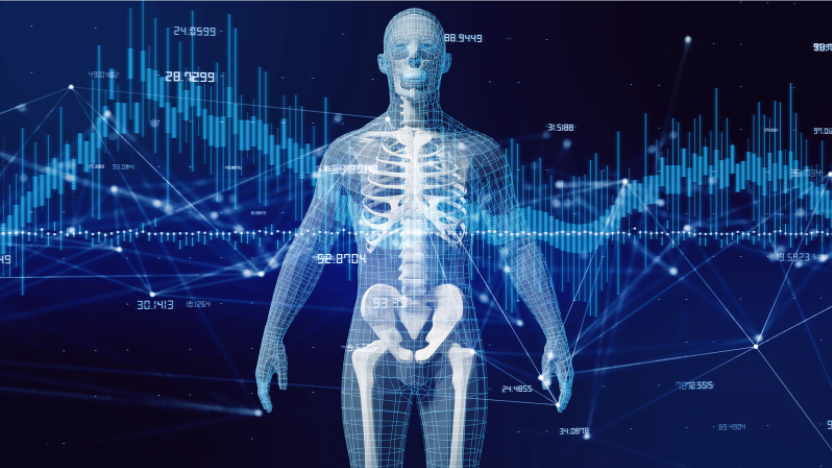There are multiple methods for measuring body fat: bioimpedantiometry, dual-energy x-ray absorption, plicometry (using skinfold calipers), morphological imaging study etc.
For years researchers have debated about the best way to determine body composition. Although there are more modern and precise methods which can be used each technique has important advantages and disadvantages which should be noted. That is why the ideal method for determining body composition is one that relies on all of the methodologies to produce a joint assessment.
Tania Mesa – Nutritionist and Nurse from Neolife
There are a number of different methods which can be used to measure fat mass and lean body mass with varying levels of precision.
Losing weight does not always mean that you are losing weight in the right way. It is necessary to know the amount and location of body fat tissue, since having a high percentage of fatty tissue increases the risk of developing cardiovascular diseases, diabetes, hypertension and certain types of cancer.
Being thin does not necessarily mean you must have a lower body fat percentage than thinner people, since the latter may simply be more muscular. It may also be the case that you have gained muscle mass when training hard, without noticing any variation on the weighing scales.
For years researchers have debated the most accurate way to measure body fat. The weighing scale is the conventional and simplest method as it provides an indication of weight; however, the scales cannot provide information on the amount of fat, which is why we must resort to more precise technologies.
At Neolife when starting a weight loss program (in conjunction with an exercise program), we need to understand a priori the body composition of our patients, that is to say, the amount of lean mass (muscle, bones and viscera) and fat mass in your body. In order to do this we measure and monitor their progress during consultations using a number of different methods:
Body composition using multifrequency octopolar impedantiometry.
The multifrequency octopolar impedantiometry scales are equipped with a high-frequency signal generator and precision detector. An electric current with very low intensity, totally imperceptible that does not represent any danger to the patient, passes through the body allowing us to evaluate the resistance of the body tissues. The resistance depends on the water contained in the tissue, which has a constant proportion in the muscle mass. Specifically, 73% of muscles is water. This data, together with the patient’s sex, age and height allow us to calculate the muscle mass of the entire body. The fat mass act as an insulator (as such fat does not conduct electricity), so it is not measured directly.
However, this method may still provide variable results from several measurements, mainly in cases where the individual concerned is adversely affected by the effects of any action that may modify the body’s water levels. This would be the case for those with an edema in the lower limbs, fever, persons currently taking diuretics etc. or performing the test immediately after drinking liquids (water, alcohol etc.), after eating a meal or after a period of intense exercise (we can lose between 1 and 2 kilos of water, which will be recovered in the 24 hours that follow exercise). Also some women experience a cyclic variation of weight due to menstruation, during which the volume of liquids in several kilos can increase. Misleadingly, the percentage of fat decreases temporarily, due to an increase in the total weight.
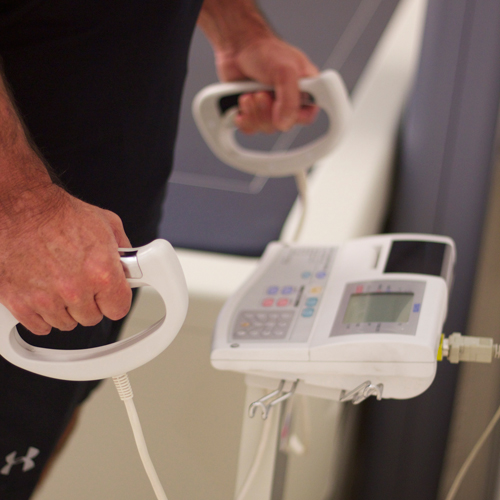
Body composition using dual-energy x-ray absorption (DXA).
DXA is the most accurate clinical device, the so-called “gold standard” of body composition measurement. This is considered the most reliable method for measuring body fat. This method determines the corresponding weights and percentages of fat, bone and lean tissue. The sum of the three tissues is the total mass. Additionally, the body is segmented into different regions (arms, torso, legs etc.), allowing us to assess the specific location of excess fat or muscle tissue and develop a weight loss program or similar schedule to tone the body.
The normal range for fat percentage is very broad and depends on the reference population used. As such if the reference population are elite athletes (1), catwalk models or representatives of a healthy adult population then the normal range be altered accordingly.
One of the greatest benefits of DXA (2) is that the method allows us to evaluate the distribution of android fat and gynoid fat – as these represent the best risk predictors for health.
The healthy objective we strive towards at Neolife is that women have a fat percentage below 30% and men below 25%. However, your objective may vary depending on other criteria not related to your health such as body image (aesthetics) or physical performance factors.
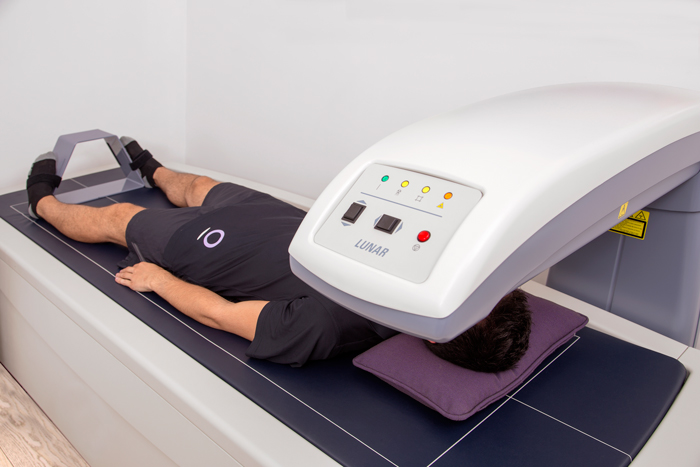
Anthropometry.
Anthropometry is the most used method in Sports Medicine. It is based on the measurement of skin folds using a caliper known as a “skinfold caliper”, as well as a number of different perimeters and diameters. It is necessary that the measurements be taken by an expert in the field (anthropometrist).
By using these anthropometric determinations and applying a series of formulas, the expert can calculate the body composition and somatotype of the individual concerned. The measurement and examination over time of fat folds, their total measurement and circumference can accurately record the anthropometric changes of a body.
The fold curve for cutaneous fat can provide valuable information on the magnitude and distribution of subcutaneous fat. However, this only provides localized, not extensive, body fat data. In addition, it is not useful for measuring skin folds in obese people.
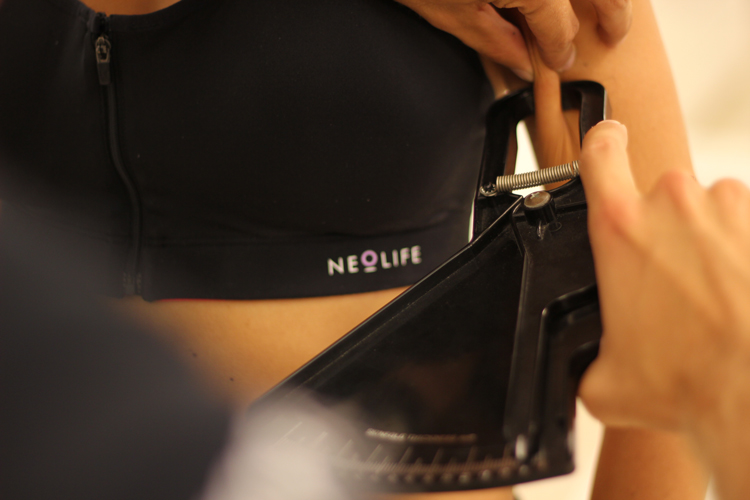
Morphological image study (photographs).
The morphological image study allows us to observe subtle changes in body shape, body volume and postural habits, which are difficult to appreciate using the previous techniques when assessing body composition.
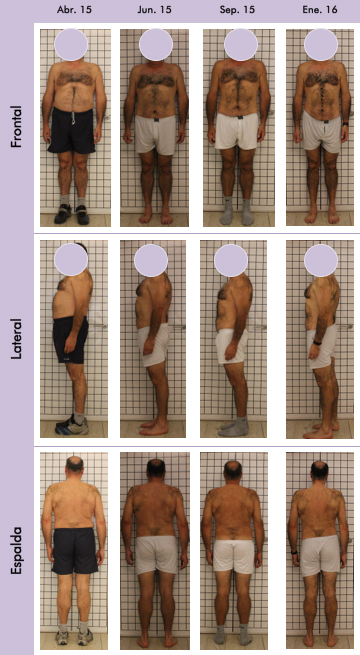
At the Neolife clinic we use all body composition measurement techniques in a combined fashion to take advantage of the benefits each can provide.
There are many different methods for determining body composition and each of them has their own distinct advantages and disadvantages. For this reason, at Neolife, during the clinical checks we carry out as part of our nutritional consultations, we use all of the above mentioned techniques to measure the body composition of the individual concerned. When used together the techniques can be used to provide us with very accurate information, and enable us to establish nutritional recommendations, personalized diets and training schedules.
BIBLIOGRAPHY
(1) Bilsborough JC, Greenway K, Opar D, Livingstone S, Cordy J, Coutts AJ. “The accuracy and precision of DXA for assessing body composition in team sport athletes”. J Sports Sci.2014;23(19):1821-8.
(2) Ulbricht L, Neves EB, Ripka WL, Romaneli EF. “Comparison between body fat measurements obtained by portable ultrasound and caliper in Young adults”. Conf Proc IEEE Eng Med Biol Soc.2012;2012:1952-5.

